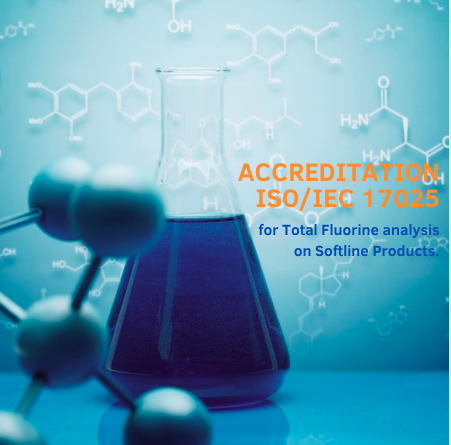TIL has obtained ISO/IEC 17025 certification to ensure the highest quality in PFAS analysis
Certification guarantees the quality of total fluorine measurement in a variety of matrices such as paper, solid and liquid compounds, leather, plastics, fur, textiles.

New recognition has come to the quality of the work carried out in the TIL laboratory, which has obtained ISO/IEC 17025 certification for PFAS analyses.
For several months now, the laboratory has been equipped with the necessary equipment to carry out TF analyses and has carried out various investigations in different areas to map the presence of ‘forever chemicals’ in numerous matrices.
The types of analysis for PFAS detection, which are used to assess the conformity of articles with PFAS restrictions, are basically of two types: ‘taget’ analyses allow the detection of a limited number of substances for which analytical standards are available. These are about 70 substances, but there are more than 10,000 PFASs in circulation, so a more careful analysis is necessary.
“Untarget’ analyses (TF: Total Fluorine and TOF: Total Organic Fluorine): these are innovative and recently applied techniques that allow a broad-spectrum screening of all substances in the sample containing levels of organic fluorine and therefore also attributable to PFAS.
These analyses can be used in different sectors: in textiles and clothing, in cosmetics, in the paper industry. They can also be carried out on water. TIL has already acquired considerable expertise in the study and detection of PFAS, as demonstrated by the study carried out on reactive dyes for cellulosic fibers.
WHAT PFAS ARE
“Polyfluoroalkyl substances (PFAS) are defined as: any substance that contains at least one fully fluorinated (without any H/Cl/Br/I attached to it) carbon atom of methyl (CF3-) or methylene (-CF2-)”
This definition is from the OECD (Organisation for Economic Co-operation and Development) and was released in 2021: as of today, we can estimate that there are about 10,000 substances that can be considered PFAS according to the latest definition.
These are substances with important characteristics, including oil and water repellent qualities that are widely used in numerous sectors, including the fashion system. In the latter, they can be used for a variety of purposes, both in the textile and leather industries, and may also be present in some surface treatments of metal accessories. They are used in household products, such as the inner surfaces of pots and pans, or in detergents and paints. They can be detected in paper and packaging that comes into contact with food. They are used in electronics, in heavy industry, in aeronautics, in fire-fighting foams; in practice, this class of substances, thanks also to their great chemical inertness (forever chemicals), are highly resistant and have in fact contaminated all ecosystems.
WHY TOF ANALYSIS IS IMPORTANT
The TIL laboratory is equipped with the latest technology for PFAS analysis. A key element of our PFAS analysis is Combustion Ion Chromatography (CIC), which makes it possible to determine total fluorine. This data is essential for the indirect verification of PFAS in numerous types of samples. These analyses are important to ensure compliance with ‘Product Compliance’ standards and to design sustainable production processes.

